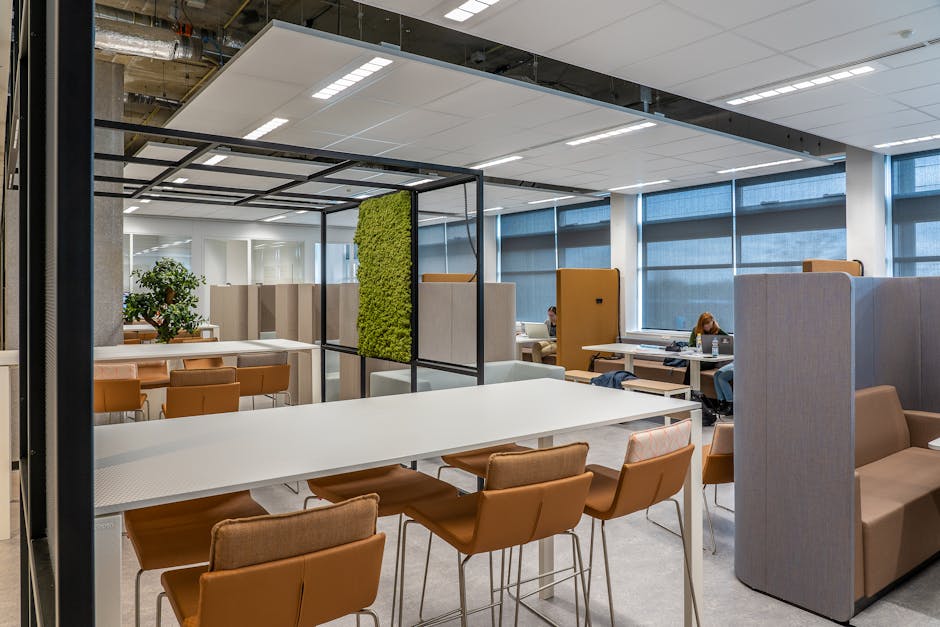Mastering Space Utilization Metrics: Optimizing Your Workplace for Success
“In today's dynamic work environment, understanding and optimizing space utilization is crucial for businesses to thrive. This article explores essential space utilization metrics and formulas, providing insights on how to create a productive and efficient workplace that adapts to the changing needs of your workforce. ”

In the ever-evolving landscape of the modern workplace, effectively measuring and optimizing space utilization has become a critical factor in driving productivity, collaboration, and employee satisfaction. As businesses navigate the challenges of flexible work arrangements and changing employee needs, understanding key space utilization metrics and formulas is essential for making informed decisions and creating a thriving work environment.

Understanding Space Utilization Metrics
Space utilization metrics provide valuable insights into how efficiently your office space is being used. By tracking and analyzing these metrics, you can identify areas for improvement and make data-driven decisions to optimize your workplace. Some key space utilization metrics include:
-
Capacity vs. Occupancy: This metric compares the total available workspace (capacity) to the actual number of employees using the space at any given time (occupancy). By monitoring this metric, you can determine if your office is over or underutilized.
-
Space Utilization Score: Calculated by dividing the number of employees by the total workplace capacity, this score provides a quick snapshot of how efficiently your space is being used. A score of 75, for example, indicates that 75% of your allotted space is being utilized.
-
Demand for Space: Understanding the specific space requirements of different departments or teams is crucial for effective space allocation. By tracking the demand for space, you can ensure that each group has access to the resources they need to be productive.
-
Daily Variables: Considering factors such as remote work, part-time employees, and contractors, it's important to assess the average density of your space occupancy on a daily basis. This information can help you make informed decisions about hot desking vs hoteling: which flexible office strategy is right for you.
Optimizing Your Workplace with Space Utilization Formulas
Once you have a clear understanding of your space utilization metrics, you can apply formulas to optimize your workplace design and create a more efficient and productive environment. Here are some strategies to consider:
-
Embrace Agile and Flexible Workspaces: Transitioning from traditional cubicles to open and equal workstations can promote collaboration and adaptability. Consider creating small private spaces for one-on-one conversations and personal phone calls, while also incorporating breakout spaces for impromptu gatherings and social interaction.
-
Analyze Meeting Room Usage: Evaluate the utilization patterns of your meeting rooms to determine if you have the right mix of large boardrooms and smaller collaboration spaces. By optimizing your meeting room configuration, you can ensure that your teams have access to the spaces they need for effective communication and teamwork.
-
Encourage Flexible Work Arrangements: Allowing employees to work flexible hours and telecommute can help reduce the strain on your office space while promoting work-life balance. Invest in workplace technology that enables seamless connectivity and collaboration, regardless of location.
-
Implement a Workplace Management System: Utilizing a comprehensive workplace management system can help you visualize space usage, manage hot desking and conference room scheduling, and ensure efficient utilization of your office space. By leveraging technology, you can create a more agile and responsive workplace that adapts to the needs of your employees.

Conclusion
As the workplace continues to evolve, mastering space utilization metrics and formulas becomes increasingly important for businesses looking to optimize their office space and create a productive and engaging work environment. By understanding key metrics, applying optimization strategies, and leveraging technology, you can transform your workplace into a dynamic and efficient hub that fosters collaboration, creativity, and employee well-being.
Embracing the future of work means adapting to the changing needs of your workforce and creating spaces that inspire and empower your teams. By staying attuned to space utilization trends and best practices, you can position your organization for success in the ever-changing landscape of the modern workplace.

To learn more about practical workplace technology and strategies for optimizing your office space, explore our article on 4 tips for creating a productive hybrid office space. By embracing innovative approaches and staying ahead of the curve, you can create a workplace that not only meets the needs of your employees but also drives your business forward.

Want to learn more about Hybrid Work?
Explore our complete guide with more articles like this one.